15Pillar oak
Quercus robur fastigiata
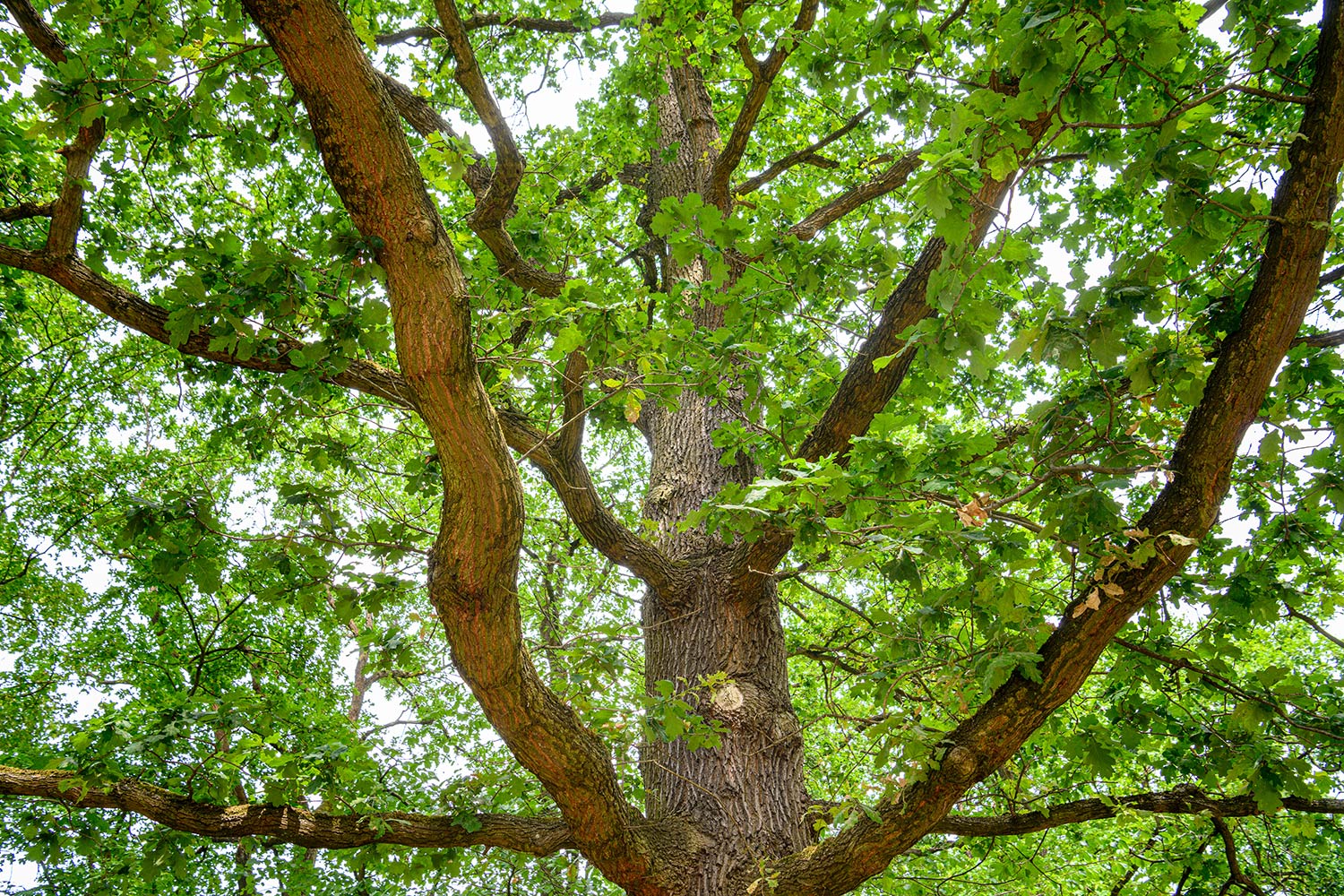
Beside the path come a group of trees that are the 15th stop on the tour: pillar oaks, botanical name Quercus robur fastigiata. They are variants of the pedunculate oaks, also called German or English oaks, of the beech family or Fagaceae.
Quercus is Latin for oak. The name oak comes from the old Germanic "eich". The name pedunculate oak comes from the fact that its fruits grow on long stalks. The name pillar oak comes from the form of their growth. The tree’s side shoots always grow upward, which gives it its distinctive shape. The Latin variant name also refers to this, because fastigiata means "with upright branches" or "pointed, tall-growing".
The pillar oak is attains 20 to 40 meters in height and reaches a trunk circumference of up to three meters; in the open up to 8 meters. Its maximum age is 500 to 1000 years, in exceptional cases up to 1400 years. Its bark is smooth and a faintly shiny gray-green when young, later forming a thick, deeply longitudinally fissured, gray-brown bark. The alternating, leathery leaves are short-stalked and grow to 10 to 15 centimeters long. They are a shiny deep green on top, lighter underneath and lobed in five to six bays. The pillar oak is monoecious. It reaches the ability to form germinable acorns at about age 60. It flowers from April to May, and the acorns ripen from September to October.
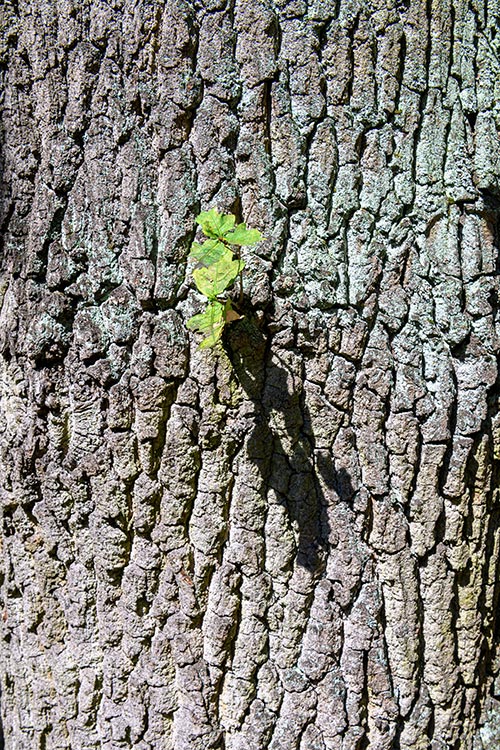
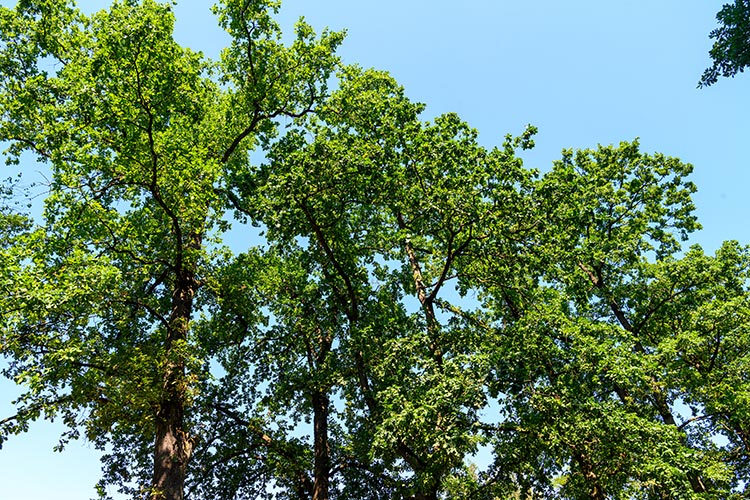
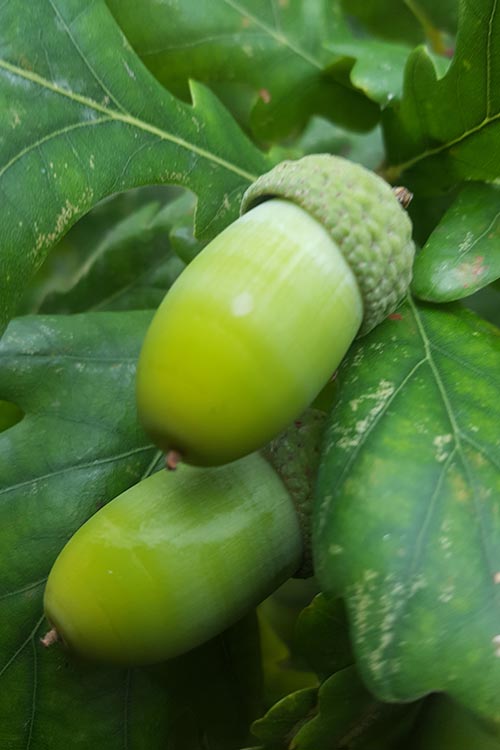
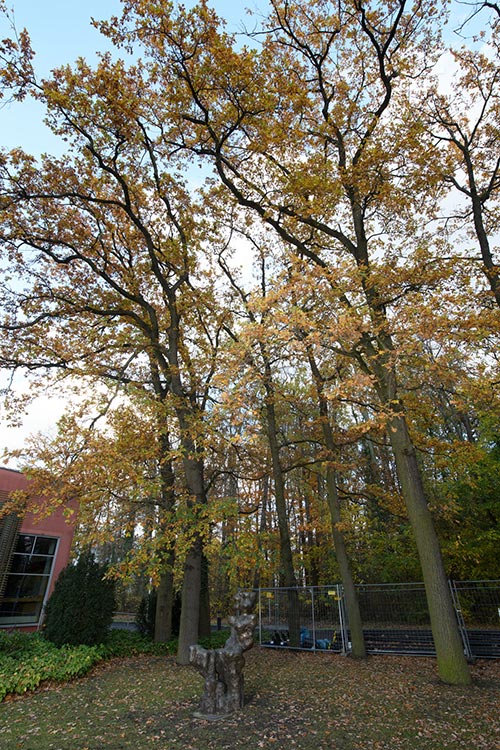
The pillar oak develops best on nutrient-rich, deep loam and clay soils. Its adaptability also allows it to take root in moist to wet soils. It forms strong roots that make it extremely storm-resistant. Its roots can also penetrate heavily compacted soils to reach deep-lying groundwater.
The pedunculate oak is the most widespread species of oak in Central Europe. It is found throughout Europe and is only absent in the south of the Iberian Peninsula, Sicily, southern Greece, northern Scandinavia and northern Russia.
The acorns are edible to humans only after treatment because they contain bitter substances, but are very nutritious and contain one-third starch. They serve as food for various animals, which also spread them. For cattle and horses acorns and oak leaves are harmful because of the high tannin content.
The dried bark of the young twigs and hollyhocks serve as a drug. The bark mostly contains ten to 20 percent tannins, primarily catechins and tannins. Externally, full baths or poultices with preparations of oak bark are used, especially for inflammatory skin conditions and febrile and infectious diseases. Oak bark can also be taken internally for non-specific, acute diarrheal diseases, through tea preparations. Oak leaves contain, among other things, tannins, polyphenols and flavonoids. When dried, they are also used in traditional remedies: externally for purulent conjunctivitis, vaginal discharges and uterine inflammations, and internally for bleeding, hemoptysis, diarrhea and urinary incontinence. Acorns are used for stomach and intestinal disorders because of the tannins. Roasted acorns are popularly used as acorn coffee for diarrhea in children and as an antidote for poisoning.
The pedunculate oak was Tree of the Year in Germany in 1989.